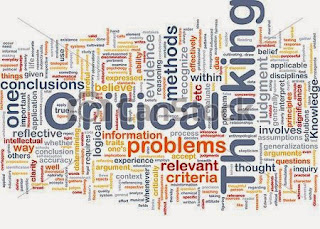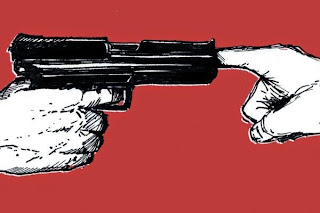In Montaigne's Essais, through the distinctive writing style, the subject matter, and the structure of the work, both as a whole, and in regards to the content of each chapter, it can be said that the image of a ‘nouvelle figure: un philosophe impremedité et fortuite’ is evident. However, by dealing with the chapters 'de l'amitié' and 'de l'institution des enfans', arguably the extent to which this claim is to be considered an entirely truthful or applicable description, when looking at the style, subject and structure, can be somewhat disputed.

Structurally, the Essais, due to the frequent additions to manuscript editions, can be seen as indicative of a style that is indeed ‘impremedité et fortuite'. Terence Cave has argued that the way in which thoughts flow freely onto the pages of the Essais is a component that 'only develops gradually'. [CAVE p.17] However, this does not seem to be the case, as consistently throughout both chapters, sentences are constantly made to be fragmented. This is due to disjointed trains of thought, or comments that have been added in later editions, and so this element of Montaigne’s writing is immediately evident. This can indeed be thought to support Montaigne’s claims, as there is little that seems to be purposeful about this structure. However, though the structure is indeed sporadic, arguably it could have been a technique of Montaigne in order to deliberately create a work that appears 'fortuite'. Collins partly supports this interpretation, stating that the 'desultoriness' of the Essais is 'intentional and conscious on the part of their author'. [COLLINS p.102]. However, he later states that the 'author's arrangement... is purely arbitrary and accidental'. [COLLINS p.105] Considering each interpretation, the structure can be said to be consistently and deliberately fragmented, thus refuting Montaigne’s claims that his work as a philosopher is ‘impremedité et 'fortuite'.
When considering ‘de l’amitié’, the idea of Montaigne’s modesty and self-awareness contributes his idea of being ‘impremedité et fortuite’. The chapter’s introductory paragraph likens the Essais to ‘peintures’, claiming them to be ‘crotesque et corps monstreux’ [AM p.183). This works as a metaphor which informs the reader that Montaigne merely considers his work to be a gross collection of random thoughts, not a deliberate work of carefully written philosophy. The reasoning for this, as Cave explains, was related to Montaigne’s abandonment of his friend La Boitie’s poems, which would have formed the Essais' centrepiece, but instead left an ‘unfulfilled space where the “painting” was to have been. The “crotesques” now fill the whole book'. [CAVE, p.28] Yet, this explanation does not seem to do justice to the Essais. Montaigne is arguably over-critical of himself, due to his likening of the work to 'peintures', that is to say, a work that is considered merely in terms of aesthetics. However, it is more reasonable that the Essais, and more specifically chapters such as ‘de l’amitié’, which is so heavily influenced by personal reflection and emotion, and poetic musings such as, ‘par ce que c’estoit luy, par ce que c'estoit moy',[AM p. ] are closer to poetry than philosophy, and so not merely ‘crotesques’. Montaigne is evidently enamoured by La Boitie, ‘qui honorera tout le reste de cette besongne' [AM p.183] Thus, when considering such a work as philosophy, it is inevitable that it would appear to be that of a ‘nouvelle figure', and indeed a philosopher who is ‘impremedité et fortuite’, as he is not intent on deciphering friendship as an abstract concept, but in trying to describe and define his own, deeply complex, relationships.
Similarly, when attempting this deciphering of his friendship with La Boitie, he attributes it to a ‘force inexplicable et fatale…par quelque ordonnance du ciel’ [AM p.188]. This language, evoking a sense of destiny or fate, without forethought or planning on Montaigne’s part, could support Montaigne’s claims of being 'fortuite'. If he believes this explanation for his friendship, it is fair to say that the chapter 'de l'amitié' reflects this.
In 'de l'institution des enfans', Montaigne considers more widely the discipline of philosophy, and of how philosophical ideas are created and appropriated. He considers the works of ancient philosophers, citing those who followed a rigorous, rational and ordered method of philosophical writing, yet as Montaigne’s own work is in complete contrast to this, he can indeed be seem to have accidentally, through experimenting with this new style, created himself as a ‘nouvelle figure’ of philosophy. Moreover, he criticises his contemporaries who are ‘semant des lieux entiers des anciens autheurs pour se faire honneur’ [EN p.194]. This is reinforced by the simple statement, ‘qui suit un autre, il ne suit rien’. [EN p.199] It is clear that Montaigne is not following the example of his philosophical predecessors, because of this disdain for those who do. Instead, it can be said that his pioneering style follows what he paraphrases from Plato, that ‘la fermeté, la foy, la sincerité estre la vraye philosophie, les autres sciences et qui visent ailleurs, n’estre que fard’(EN, p.200) . Ideas may be formulated from those of others, or happened upon through reflection, yet this is deemed irrelevant by Montaigne, ‘ce n’est plus selon Platon que selon moy, puis que luy et moi l’entendons et voyons de mesmes’,[EN p.199] as if both result in arriving at the same conclusion, it becomes the thinker’s idea, not the idea of the original philosopher. This is reflected by the metaphor of bees, a common metaphor of the time, whereby, 'les abeilles pillotent deça dela des fleurs, mais ells en font après le miel, qui est tout leur'. [EN p.199] This again reiterates the concept of taking an idea, digesting it and, having understood it, appropriating it as your own. In his determination not to follow his contemporaries' example, combined with a determination to present sincerity and a resolve that ideas may be formulated however the thinker deems it appropriate, Montaigne’s work in this chapter does indeed constitute a new, and so plausibly 'fortuite’, style of philosophy.
On balance, these chapters of Montaigne create a complex argument in terms of his claims as a ‘nouvelle figure: impremedité et foruite’. Though undoubtedly the pioneering style of his writing is disjointed, and indeed his train of thought throughout each chapter do not seem to follow any logical, linear direction, he can be considered a 'nouvelle figure' of philosophy, due to the very fact that this method had not previously been tried. Nevertheless, it is the concept of being 'impremedité et fortuite' that is problematic. His self-deprecation is often so hyperbolic that it seems not to be an honest claim of being 'crotesques', nor does it seem plausible that Montaigne is sincere when in the 'au lecteur' foreword, he claims, ‘je n’y ay eu nulle consideration de ton service, ny de ma gloire’ [OTHER EDITION, p.3].Instead, this modesty becomes ‘an effective means of persuasion’ [MCGOWAN, p.15]. Indeed, his subject matter, as discussed in regards to 'de l'amitié', allows for a disregard of both philosophical musing, and the established method of philosophical writing. Therefore, it seems most pertinent to argue that Montaigne may indeed be considered a ‘nouvelle figure’, and, to a lesser extent, 'impremedité et fortuite'. The chapters show him to have happened upon a ‘nouvelle’ methodology for philosophy, simply through following his own conviction, and in spite of his self-awareness and the fact that the book was, by its very nature, compiled on purpose, this is sufficient to support his claim.
Cave, Terence, How To Read Montaigne, (London: Granta Books, 2007)
Coleman, Dorothy Gabe, Montaigne's Essais, (London : Allen & Unwin, 1987)
Collins, W. Lucas, Montaigne, (Edinburgh: William Blackwood and Sons, 1879)
Glauser, Alfred, Montaigne Paradoxal, (Paris: A.G.Nizet, 1972)
McGowan, Margaret, Montaigne's Deceits: The Art of Persuasion in the Essais, (London: University of London Press Ltd, 1974)
Moser, Patrick, 'Montaigne's Literary Patrons: The Case of La Boetie', The Sixteenth Century Journal, 31 (2000)
Norton, Glyn P., Montaigne and the Introspective Mind, (Paris: Mouton, 1975)


















